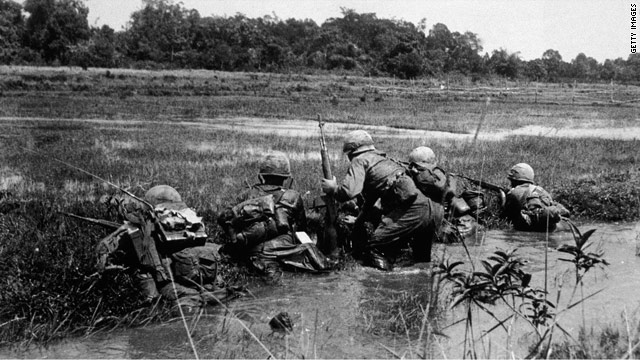I'm Watermark
Diabetic

Given the long, awful history of violence between groups of people, it’s easy to think that humans are predisposed to war. But a new study of violence in modern hunter-gatherer societies, which may hold clues to prehistoric human life, suggests that warlike behavior is a relatively recent phenomenon.
Sure, humans are violent, the researchers say — but most hunter-gatherer killing results from flared tempers and personal feuds rather than group conflicts.
The findings contradict the notion “that humans have an evolved tendency to form coalitions to kill members of neighboring groups,” wrote anthropologists Douglas Fry and Patrik Soderberg in their July 18 Science paper.
“The vast majority of us assume that war is ancient, that it’s part and parcel of human nature,” said Fry. “These types of perceptions have very strong influences on what goes on in current-day society.”
Fry and Soderberg hope to illuminate an era stretching from roughly 10,000 years ago, when metal tools appear in the archaeological record, to about 2.5 million years ago, when stone tool use became widespread. This period looms in our anthropological self-regard as humanity’s adolescence, an evolutionary crucible that would shape our species.
One view, reinforced by studies of conflict in chimpanzees and scattered archaeological evidence of violent deaths in prehistoric humans, holds that group-on-group violence was common and constant, both reflecting and influencing human nature.
A few other researchers consider that view unjustifiably dark, a sort of scientific version of original sin. They say collective human violence was an aberration, not a basic feature of life. In this camp is Fry, who in 2007′s Beyond War: The Human Potential for Peace argued that archaeological evidence of prehistoric warfare was often misinterpreted, and modern hunter-gatherer violence exaggerated.
In most foraging societies, said Fry, lethal aggression was infrequent, and in the archaeological record violence didn’t take regular group-on-group character until relatively recently, when people settled down in ever-larger, more complex and hierarchical societies.
In the new paper, Fry and Soderberg looked at ethnographic histories of 21 nomadic forager societies, compiling a database of every well-documented incidence of lethal aggression that could be found in reputable accounts spanning the last two centuries.
They counted 148 incidents in all, of which more than half involved a single person killing another. Only 22 percent involved multiple aggressors and multiple victims, and only one-third involved conflicts between groups.
Most killings were motivated by sexual jealousy, revenge for a previous murder, insults or other interpersonal quarrels. Collective, between-group violence was the exception, not the rule. To Fry, the weight of evidence suggests that humanity’s origins were, if not exactly peaceful, then not warlike, either.
“When you look at these foraging groups, you see a great deal of cooperation. There are homicides on occasion, but generally people get along very well,” said Fry. “Humans have a capacity for warfare — nobody’s denying that. But to make it a central part of human nature is grossly out of contact with the data.”
Fry’s take on the history of conflict has prompted some conflict itself. Sam Bowles, a Santa Fe Institute economist and behavioral theorist who posits that human cooperative tendencies were shaped by warfare, said the new work “does not support the broader implications that it claims.”
The new dataset is limited, said Bowles, because it excludes less-nomadic, pastoral societies — and even if warfare wasn’t ubiquitous, modest levels would suffice to shape our social evolution, he said.
Anthropologist Richard Wrangham of Harvard University, who has studied chimpanzee conflicts, wasn’t concerned by the pastoralist omission, but said that accounts from modern hunter-gatherers are not reliable guides to the past.
These societies are now scattered, often living beside other, more powerful agricultural societies, said Wrangham. In the past, living along other foraging societies, with less imbalance of power, they’d have been more warlike.
Fry agreed that modern foragers are imperfect windows into humanity’s origins, but said the data do suggest a trend that fits with a paucity of archaeological evidence of warfare from before 10,000 years ago, when complex, settled societies arose.
Anthropologist George Chaplin of Penn State University, who hasn’t been as directly involved in the debate, agrees that “the earliest human ancestors must have been more peaceable than a chimpanzee model would predict.”
Chaplin, who recently wrote about the emergence of group conflict in eastern North America — which appears to have been fueled by increasing human populations and the advent of bows — said the key to peaceability is in large foraging areas and low population densities.
http://socialistworker.org/blog/critical-reading/2013/07/20/study-war-not-due-human-nature
